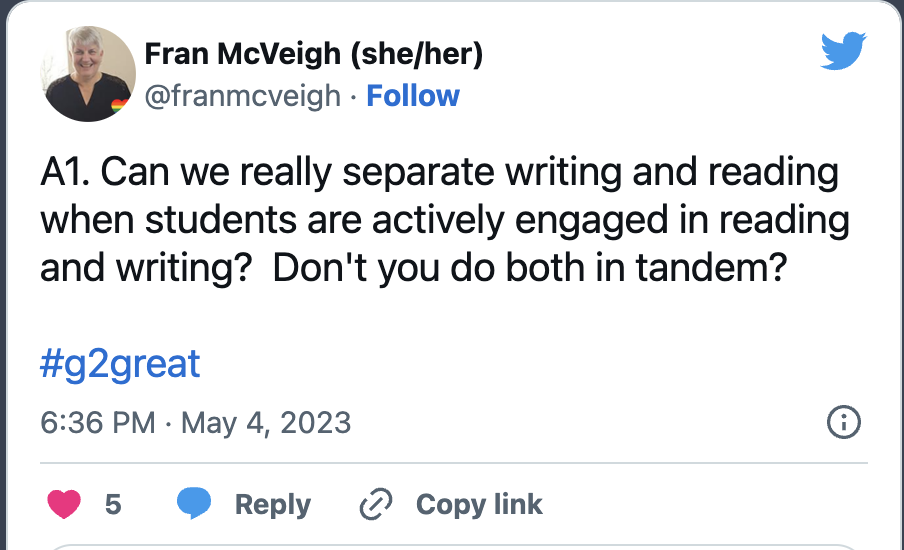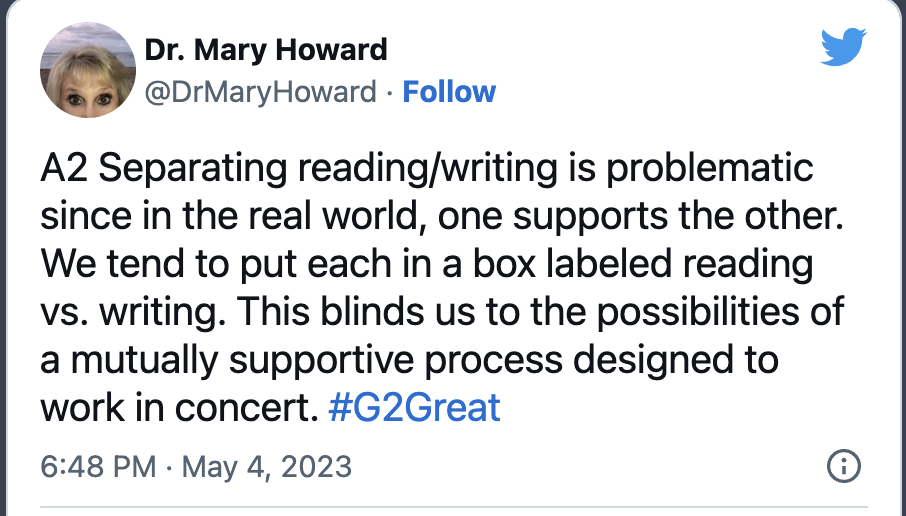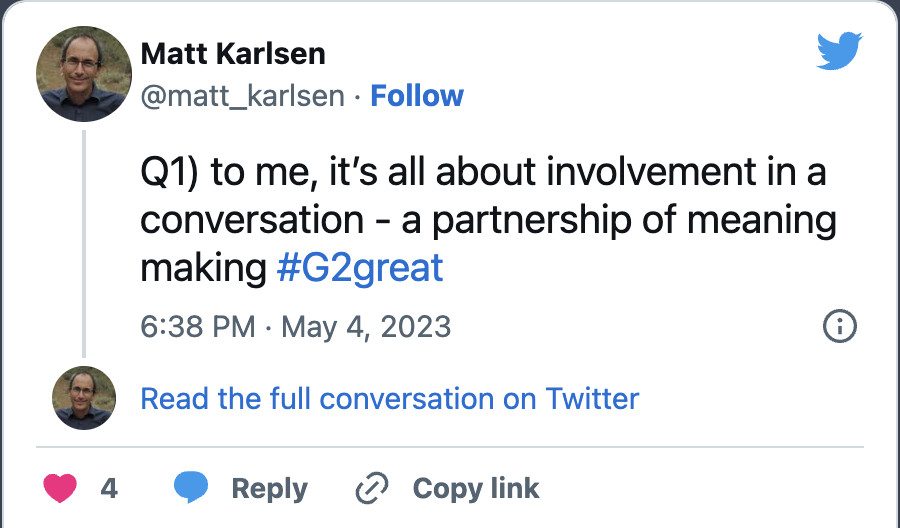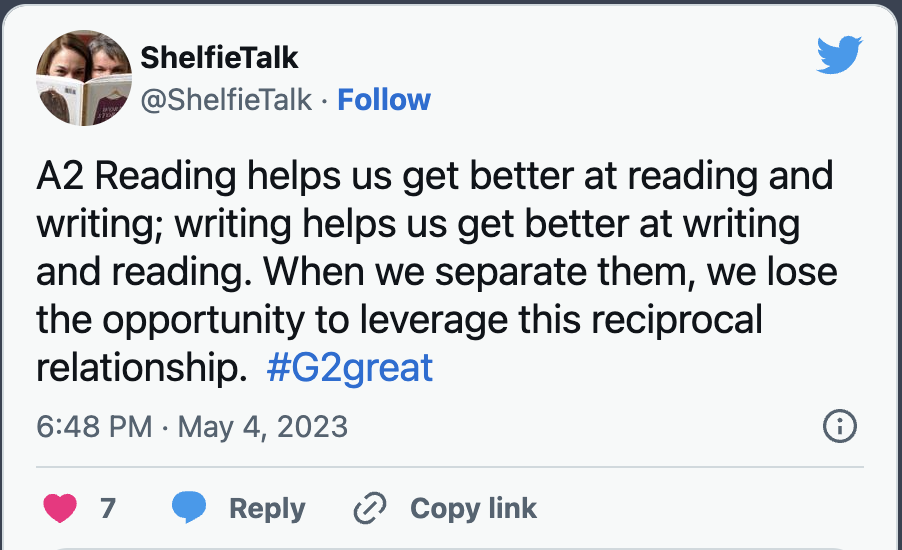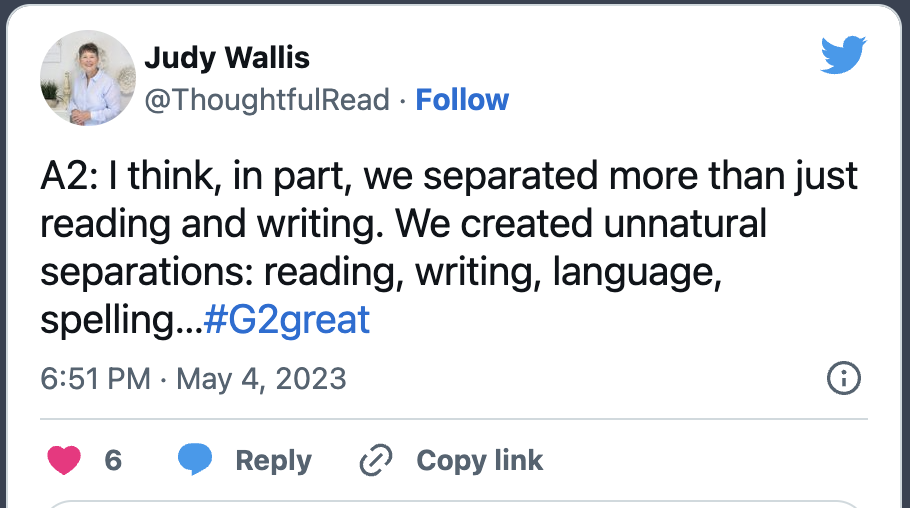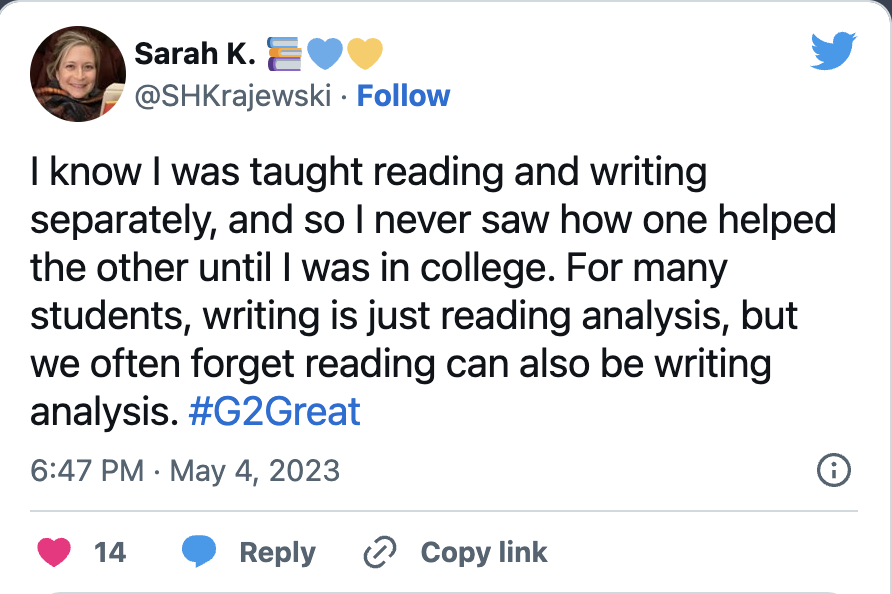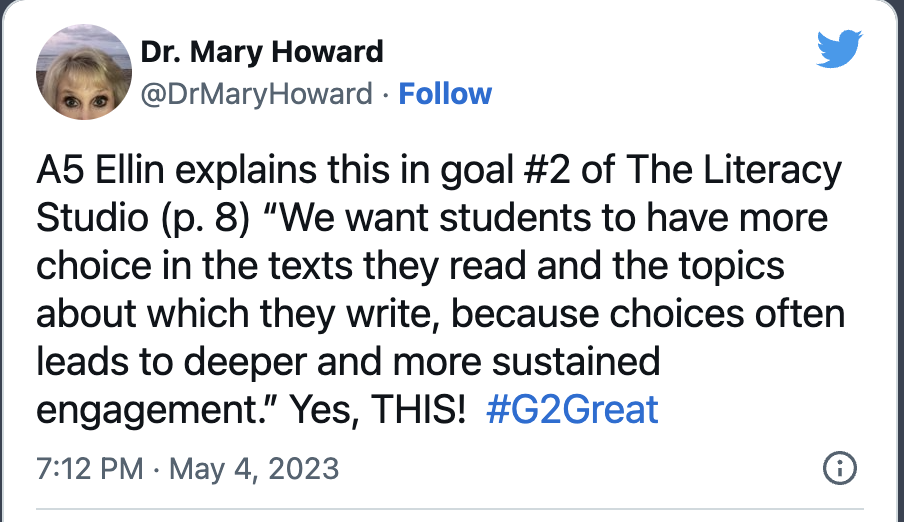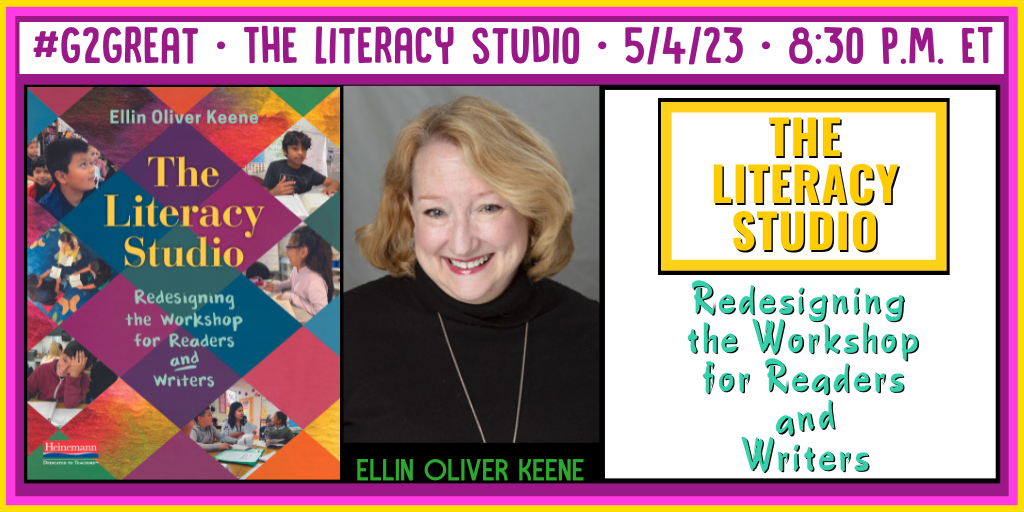
By Brent Gilson
For a record of the chat, check out the Wakelet here
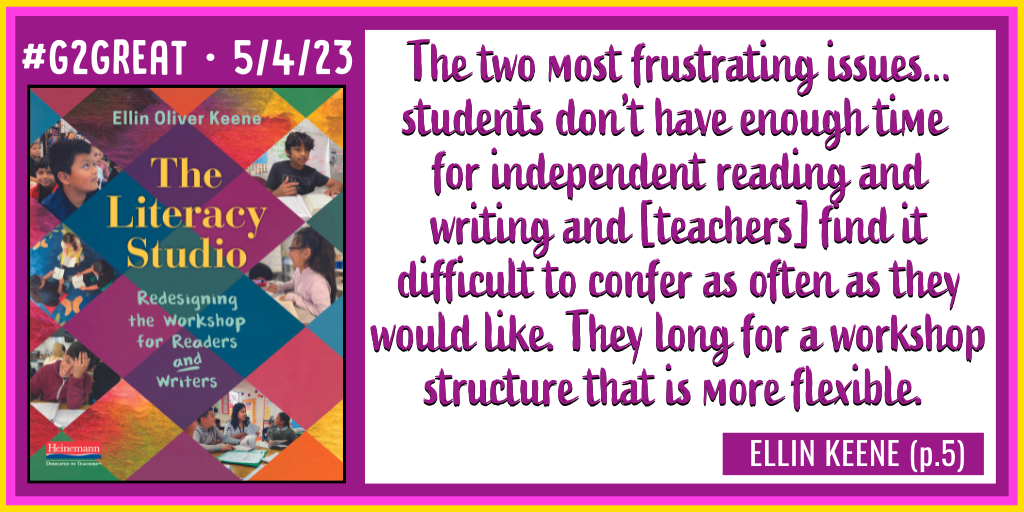
I remember my first classroom still—a grade 3 class. I taught half-time. I was assigned to teach “Creative Writing” and Social Studies. The morning teacher was responsible for Math, Science, and Reading. I remember at the time thinking how weird it was that they would split reading and writing, but we did the best we could. When the kids were with me, we wrote and covered more writing-specific lessons. The idea that these two elements of language arts were separate and assigned to different teachers was hard to understand. I vowed that when I had my classroom, I would ensure I taught them together. This was long before I heard about a workshop approach to teaching.
Over the years, I learned. I implemented things like The Daily 5 and Café; we started adding different writing opportunities to our centers. As I moved up in grades I realized that students did not need to have as much structure as I was providing and I shifted to even more choice. In my last years of elementary teaching we had arrived at a literacy block of 90 minutes that was choice driven but I still had some rigid rules like “once you have chosen a task stick to it for 20 minutes” The idea of jumping back and forth was not something I was ready to embrace.
Transitioning to High School and the shorter periods, I have still been unable to totally figure it out but after the discussions from the chat I see myself embracing the idea of Literacy Studio when we return to the classroom in September. Some thoughts that helped renew my commitment to the Literacy Studio.
Further points highlight the reciprocal nature of reading and writing.
When we know that reading and writing compliment each other so well why are so many of use still invested in the separation and teaching of each in isolation?
It can be hard to imagine instruction differently than we were taught. It can be difficult to look at the way things have always been done and not only dream of better but to turn that dream into reality. It can be difficult but it is a challenge we can meet and one our students deserve. Reimagining the way we approach literacy instruction to not only be responsive to student needs but also respectful of student choices. That is what the Literacy Studio provides.
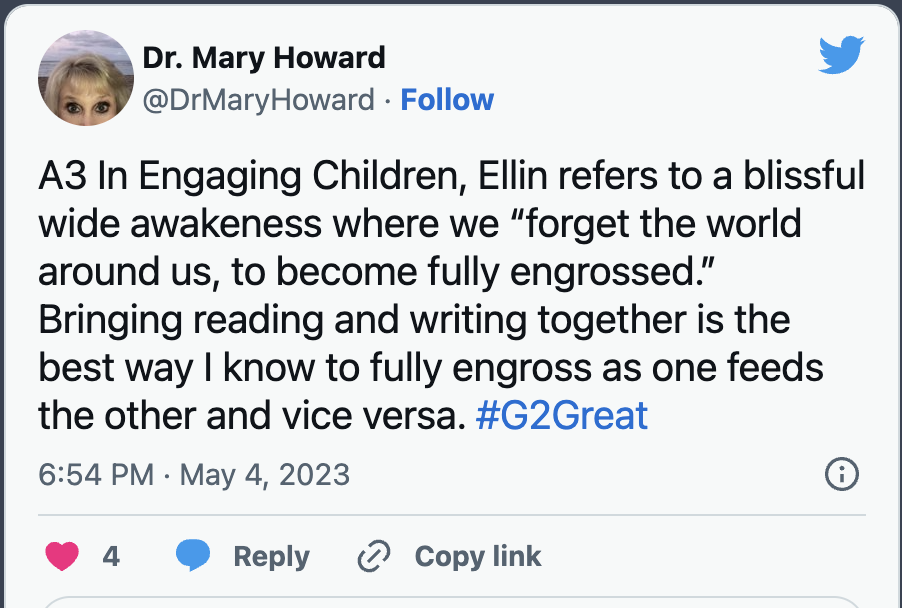
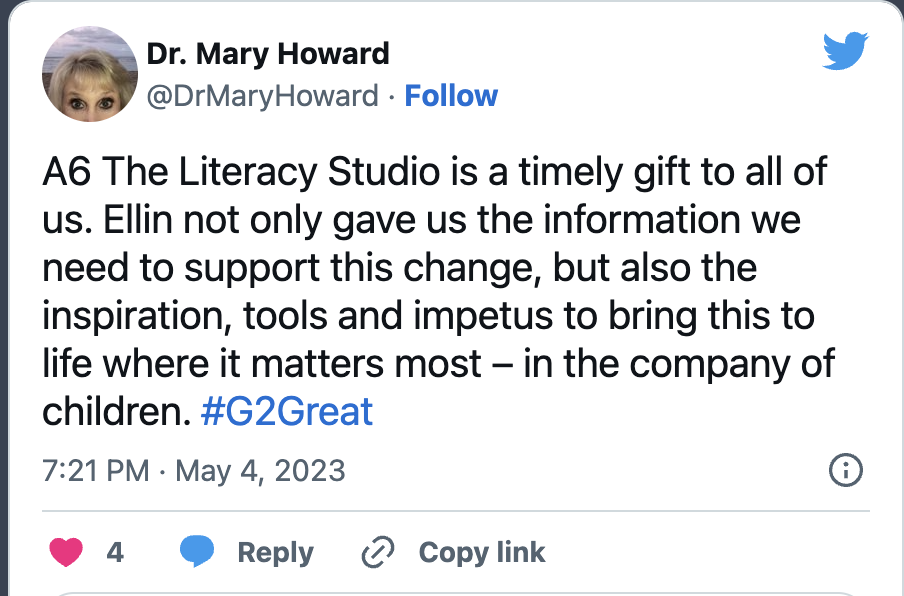
Big thanks to Ellin Keene for this rich text, joining in on the chat, and really helping teachers see different ways they can bring meaningful literacy work to their classrooms. If you have yet to pick up a copy make sure to check out The Literacy Studio here
